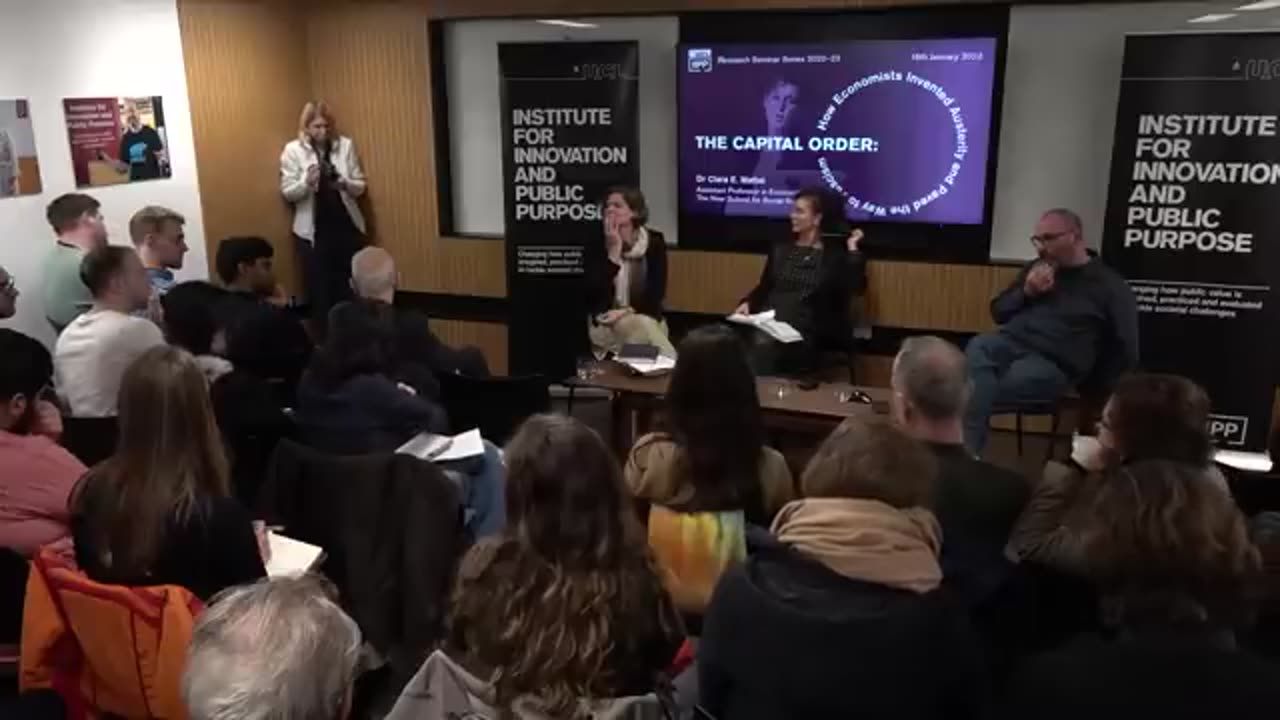Premium Only Content

The Capital Order: How Economists Invented Austerity and Paved the Way to Fascism
For more than a century, governments facing financial crisis have resorted to the economic policies of austerity—cuts to wages, fiscal spending, and public benefits—as a path to solvency. While these policies have been successful in appeasing creditors, they’ve had devastating effects on social and economic welfare in countries all over the world. Today, as austerity remains a favored policy among troubled states, an important question remains: What if solvency was never really the goal?
In The Capital Order, political economist Clara E. Mattei explores the intellectual origins of austerity to uncover its originating motives: the protection of capital—and indeed capitalism—in times of social upheaval from below.
Mattei traces modern austerity to its origins in interwar Britain and Italy, revealing how the threat of working-class power in the years after World War I animated a set of top-down economic policies that elevated owners, smothered workers, and imposed a rigid economic hierarchy across their societies. Where these policies “succeeded,” relatively speaking, was in their enrichment of certain parties, including employers and foreign trade interests, who accumulated power and capital at the expense of labor. Here, Mattei argues, is where the true value of austerity can be observed: its insulation of entrenched privilege and its elimination of all alternatives to capitalism.
Drawing on newly uncovered archival material from Britain and Italy, much of it translated for the first time, The Capital Order offers a damning and essential new account of the rise of austerity—and of modern economics—at the levers of contemporary political power.
-
 1:57:29
1:57:29
The Charlie Kirk Show
2 hours agoJudges vs. The People + Is DOGE Enough? + Fort Knox | Rep. Roy, Glenn, Plume, Posobiec | 2.26.2025
48K6 -
 2:39:35
2:39:35
The White House
4 hours agoPresident Trump Hosts First Cabinet Meeting, Feb. 26, 2025”
36.4K24 -
 58:16
58:16
The Dan Bongino Show
5 hours agoShake-Up In The White House Press Room (Ep. 2431) - 02/26/2025
751K1.01K -
 1:00:00
1:00:00
The Rubin Report
3 hours agoDem Looks Visibly Angry as Stephen A. Smith Points Out Failures to His Face
59.7K33 -
 2:32:18
2:32:18
Benny Johnson
3 hours ago🚨 Trump's First White House Cabinet Meeting LIVE Right Now | Massive News Breaking
74.1K71 -
 2:05:04
2:05:04
Steven Crowder
5 hours agoTrump Keeps Delivering | This Week’s 3 Big Wins Explained
447K231 -
 LIVE
LIVE
Flyover Conservatives
3 hours agoProphecies | Breakthrough, Zelensky and 2040 - The Prophetic Report with Stacy Whited
1,695 watching -
 2:02:44
2:02:44
LFA TV
18 hours agoFLUSHING THE TURDS! | LIVE FROM AMERICA 2.26.25 11AM
52.4K10 -
 1:07:54
1:07:54
Timcast
4 hours agoTulsi FIRED 100+ Deep State PERVS After Fed Kink Chat EXPOSED, Trump CLEANS HOUSE | Timcast LIVE
166K58 -
 DVR
DVR
Bannons War Room
8 days agoWarRoom Live
2.1M375